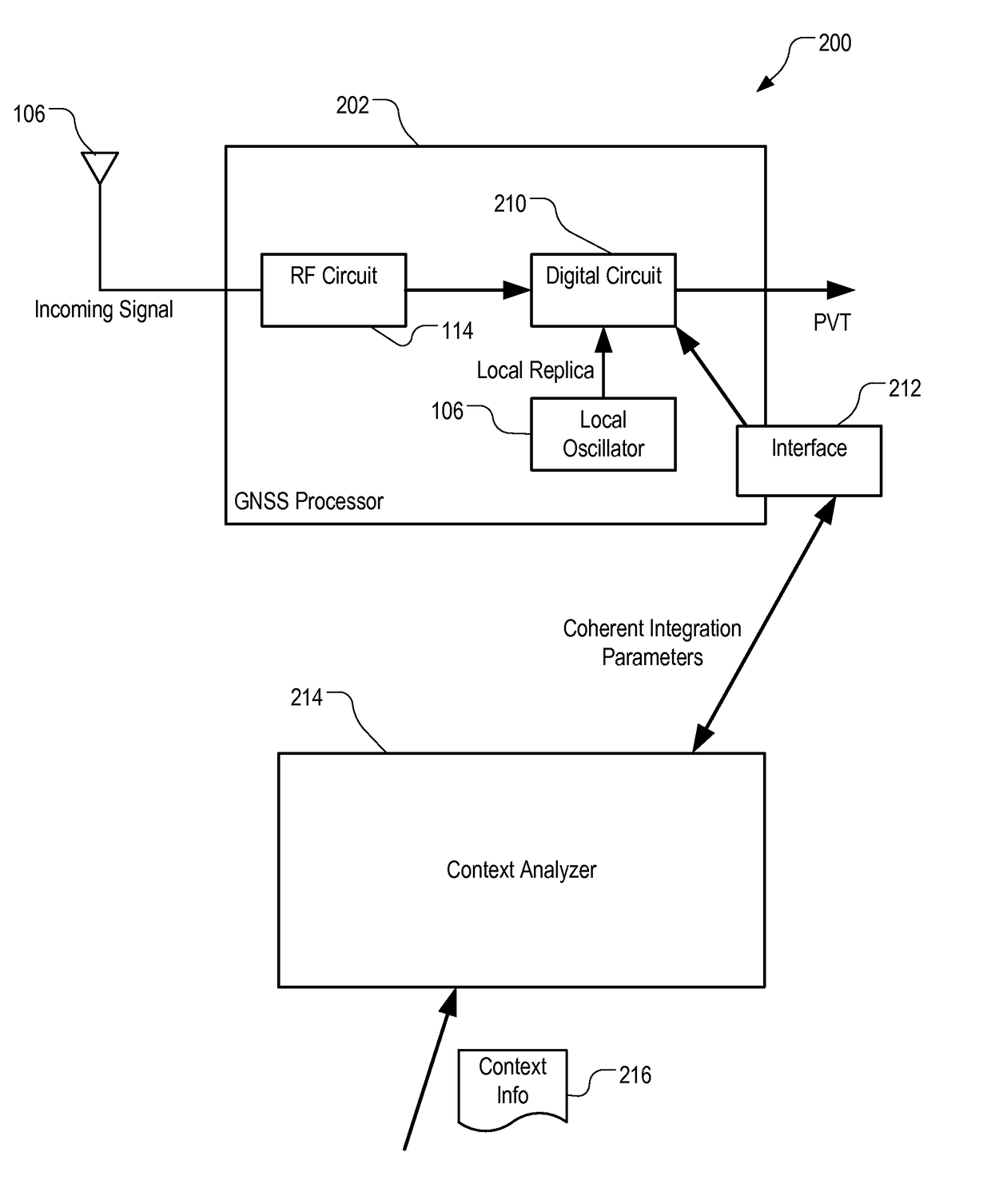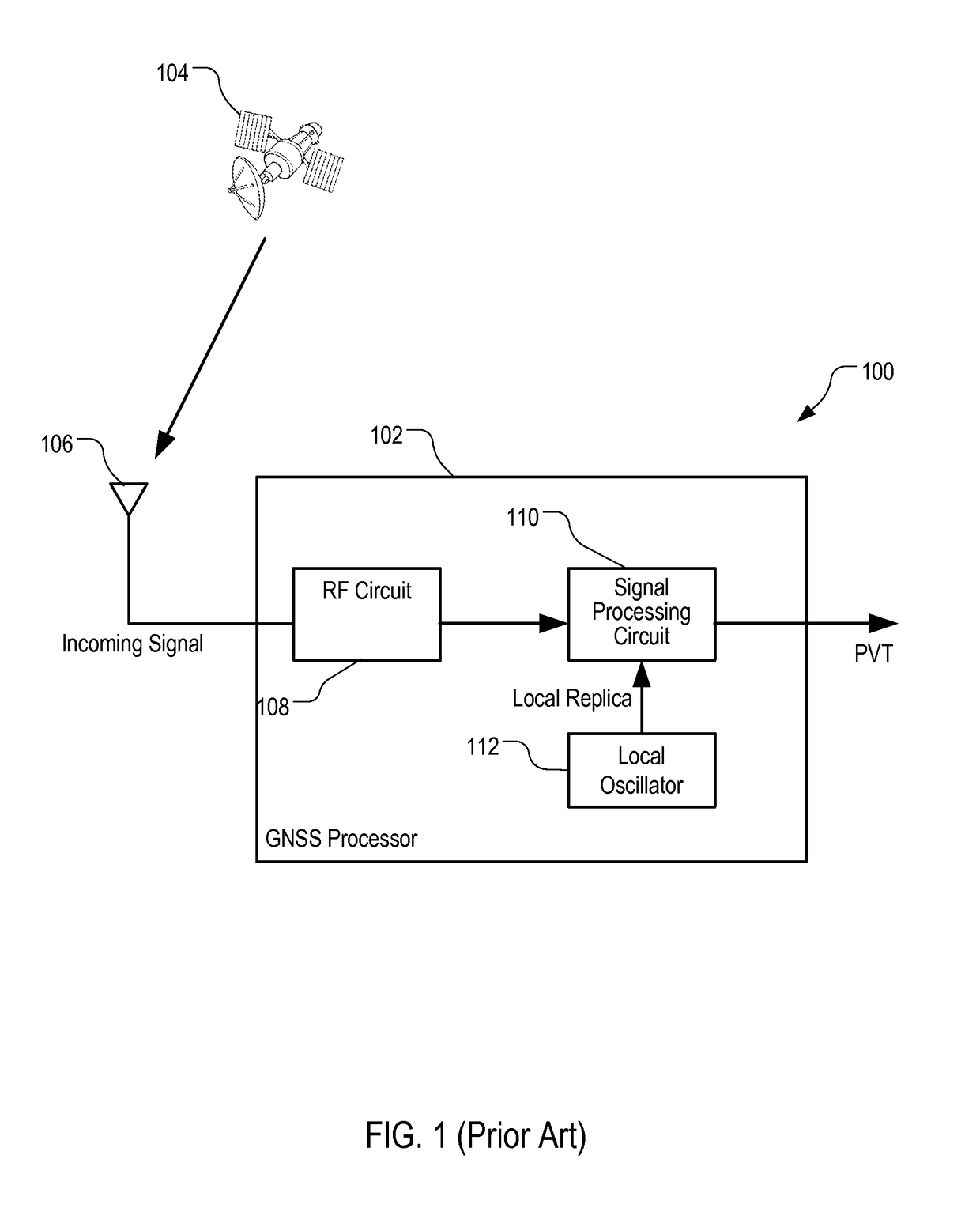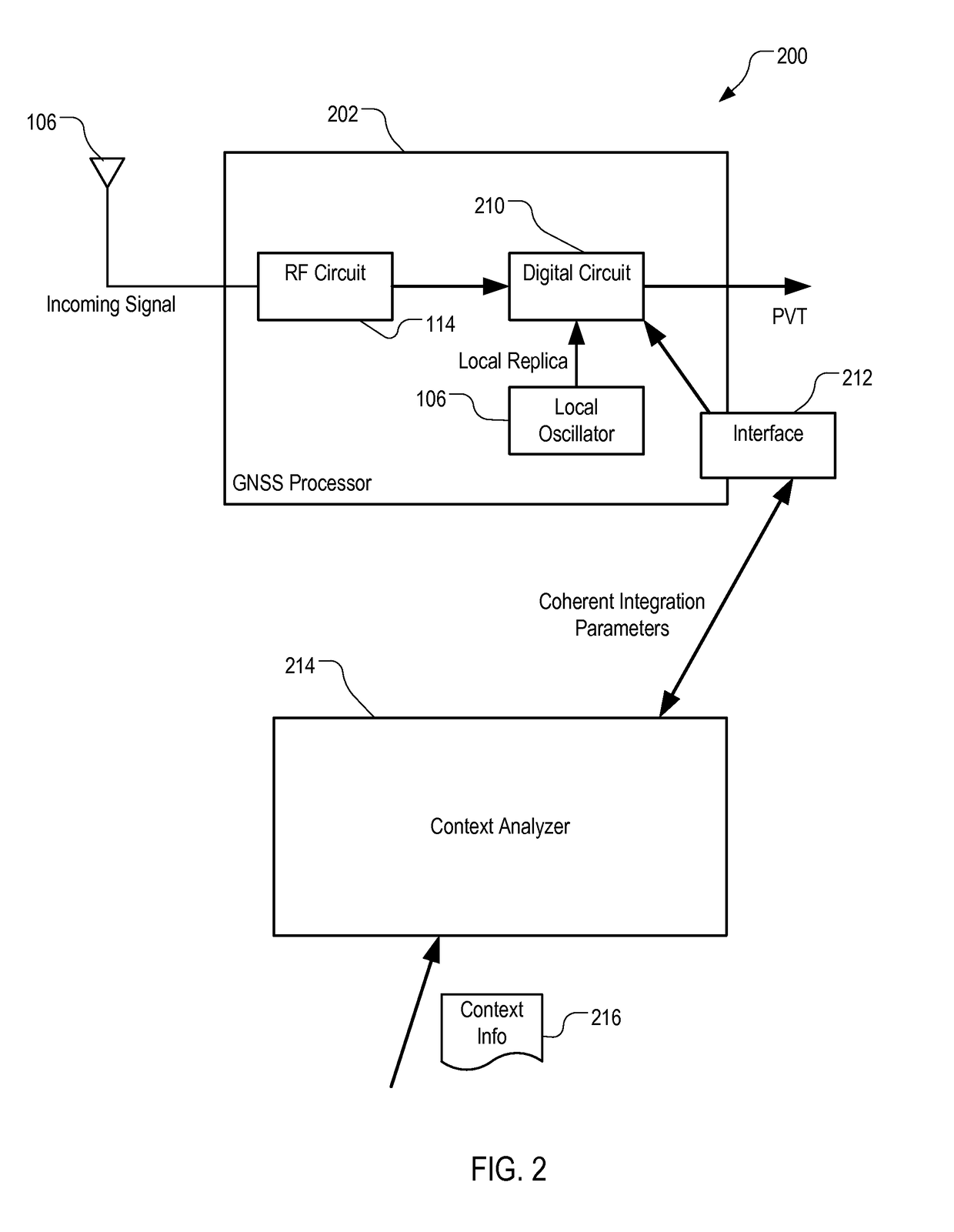Dynamic coherent integration
a dynamic coherent and integrated technology, applied in the field of radio signal location determination, can solve the problems of poor efficiency of gnss antennas, strict power consumption requirements, and difficulty in acquiring and tracking gnss signals for mobile devices, and achieve the effect of increasing the signal-to-noise ratio and antenna gain
- Summary
- Abstract
- Description
- Claims
- Application Information
AI Technical Summary
Benefits of technology
Problems solved by technology
Method used
Image
Examples
Embodiment Construction
GNSS Receiver Architecture
[0016]FIG. 1 is a block diagram illustrating an example conventional GNSS receiver system 100. GNSS receiver system 100 can include GNSS processor 102. GNSS processor 102 can be a processor configured to determine a geographic location from signals received from GNSS satellites 104. GNSS processor 102 can include, or be coupled to, antenna 106. Antenna 106 can be configured to receive radio frequency (RF) signals from GNSS satellites 104, and feed the received RF signals to RF circuit 108. RF circuit 108 can include circuit for preprocessing RF signals. For example, RF circuit 108 can include a low-noise amplifier (LNA) for amplifying the RF signals from antenna 106 and provide the amplified signals to signal processing circuit 110.
[0017]Signal processing circuit 110 can include analog and digital components. For example, signal processing circuit 110 can include down converter configured to convert the RF signals to intermediate frequency (IF) signals, an ...
PUM
 Login to View More
Login to View More Abstract
Description
Claims
Application Information
 Login to View More
Login to View More - R&D
- Intellectual Property
- Life Sciences
- Materials
- Tech Scout
- Unparalleled Data Quality
- Higher Quality Content
- 60% Fewer Hallucinations
Browse by: Latest US Patents, China's latest patents, Technical Efficacy Thesaurus, Application Domain, Technology Topic, Popular Technical Reports.
© 2025 PatSnap. All rights reserved.Legal|Privacy policy|Modern Slavery Act Transparency Statement|Sitemap|About US| Contact US: help@patsnap.com



